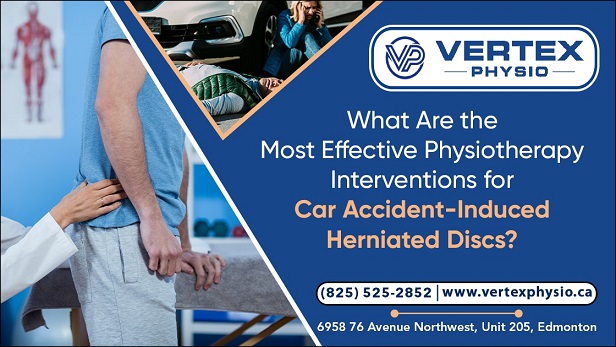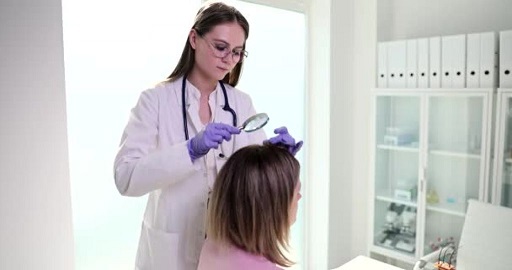Herniated discs, resulting from the high-impact forces of car accidents, can cause severe pain and disability, significantly affecting an individual’s quality of life. Motor vehicle accident physiotherapy Edmonton provides the utmost assistance to individuals experiencing this painful condition. MVA physiotherapy targets the unique challenges presented by a herniated or dislocated disc, employing a range of treatments designed to reduce pain, restore function, and facilitate a return to normal activities. This comprehensive approach to herniated disc treatment often includes manual therapy and tailored exercise programs aimed at alleviating symptoms and promoting healing within the spinal tissues.
Pain Management Techniques
Cold and Heat Therapy
Ice packs will reduce inflammation and numb the pain around the herniated area. Heat therapy can be used alternatively to relax and loosen the muscles, promoting better blood flow and aiding in healing.
Electrical Stimulation
TENS (Transcutaneous Electrical Nerve Stimulation) use electrical impulses to reduce pain sensation in the affected areas. They are commonly used in herniated disc treatments following motor vehicle accidents.
Spinal Decompression Therapy
Mechanism
Spinal Decompression Therapy utilizes a specialized traction table designed to effectively relieve spinal pressure. Patients are secured on the table with harnesses around the trunk and pelvis. The device carefully applies controlled traction to the spine, gently stretching it and creating negative pressure within the intervertebral discs. This negative pressure encourages the retraction of herniated or bulging disc material, alleviating pressure on spinal nerves.
Healing Environment
Reducing disc pressure increases the circulation of nutrients and oxygen back into the disc, promoting an optimal healing environment. This process helps reduce pain and supports the repair and regeneration of disc tissue, potentially restoring disc height and hydration.
Manual Therapy
Spinal Manipulation and Mobilization
Manual therapy in the context of motor vehicle accident physiotherapy in Edmonton involves specific techniques that manually adjust and mobilize the spine. Trained physiotherapists perform gentle yet precise manipulations to improve vertebral alignment and mobility. These adjustments help further relieve spinal nerve pressure, complementing spinal decompression’s effects.
Regular manual therapy enhances the flexibility of the spinal joints, reduces stiffness, and decreases pain, contributing to overall spinal health and functionality. This hands-on approach ensures that adjustments to the spinal structure are maintained, aiding in long-term recovery from disc-related symptoms.
Traction Therapy
Mechanical Traction
This therapy uses mechanical devices to apply a consistent or intermittent force to elongate the spine. While similar to spinal decompression, mechanical traction is typically less targeted but still effective in reducing the overall pressure on the herniated discs.
Therapeutic Effects
Mechanical traction improves blood flow and reduces nerve compression in the affected areas by increasing the space between vertebrae. This is crucial for alleviating pain and facilitating healing. This technique is useful for patients who need a gradual introduction to spinal decompression or those with multiple spinal issues.
Exercise Therapy
Targeted Strengthening Exercises:
- Core Strengthening: Incorporate exercises like planks and abdominal bracing. For planks, individuals lie face down and then raise their forearms and toes, keeping the body straight and holding the position. Abdominal bracing involves tightening the abdominal muscles as if preparing to be punched in the stomach, holding briefly, then releasing. These exercises strengthen the core muscles surrounding the spine, providing better support and reducing the load on herniated discs.
- Back Strengthening: Exercises such as back extensions can be beneficial. Lying face down with hands behind the neck, lift the upper body slightly off the ground and hold for a few seconds before lowering. This strengthens the lower back muscles, improving spinal support.
- Leg Strengthening: Simple exercises like seated leg extensions help strengthen the thigh muscles, which support proper posture and reduce spinal strain. One leg is extended straight out, sitting on a chair, held for a moment, and then lowered.
Flexibility and Stretching Exercises:
- Hamstring Stretch: Lying on the back, lift one leg and hold it straight up in the air with hands or a band, gently pulling the leg towards the body to stretch the hamstring. Hold the stretch for 20-30 seconds for each leg.
- Piriformis Stretch: In a seated or lying position, cross one leg over the other and pull the crossed leg knee towards the opposite shoulder. This stretch targets the piriformis muscle in the buttocks, relieving tension and supporting lower back health.
- Lower Back Stretch: Lying on the back with bent knees and feet flat on the ground, gently roll both knees to one side and hold to stretch the lower back and torso, then switch to the other side.
Posture Education
Corrective Postural Training
- Education on Spinal Alignment: Patients are taught to understand the natural curvature of their spine and how to maintain it. For instance, while sitting, maintaining a slight curve in the lower back by using a lumbar roll or a small cushion can prevent excessive stress on herniated discs.
- Ergonomic Adjustments: Patients learn to adjust their work and home environments to support proper posture. This includes setting up a workstation where the computer monitor is at eye level, the chair supports the lower back, and the feet can rest flat on the floor.
- Daily Posture Checks: Patients are encouraged to perform regular daily posture checks. For example, ensuring that the ears align with the shoulders while standing and the shoulders align with the hips helps maintain proper posture and prevent additional strain on the spine.
Optimizing Recovery from Herniated Discs After Car Accidents
Concluding, the effectiveness of physiotherapy interventions for treating herniated discs caused by car accidents has been well-documented. At Vertex Physiotherapy, the focus is on delivering targeted motor vehicle accident physiotherapy in Edmonton tailored to meet the needs of individuals who have suffered from such injuries. Techniques employed in car accident physiotherapy are designed to alleviate pain and facilitate the natural healing processes, improving mobility and preventing future complications.
If you’re dealing with the aftermath of a car accident, consider consulting with us. Reach out today to schedule your first appointment and start on the path to recovery.
Read More: Get Back in Shape with Post-Pregnancy Slimming Solutions in Singapore



